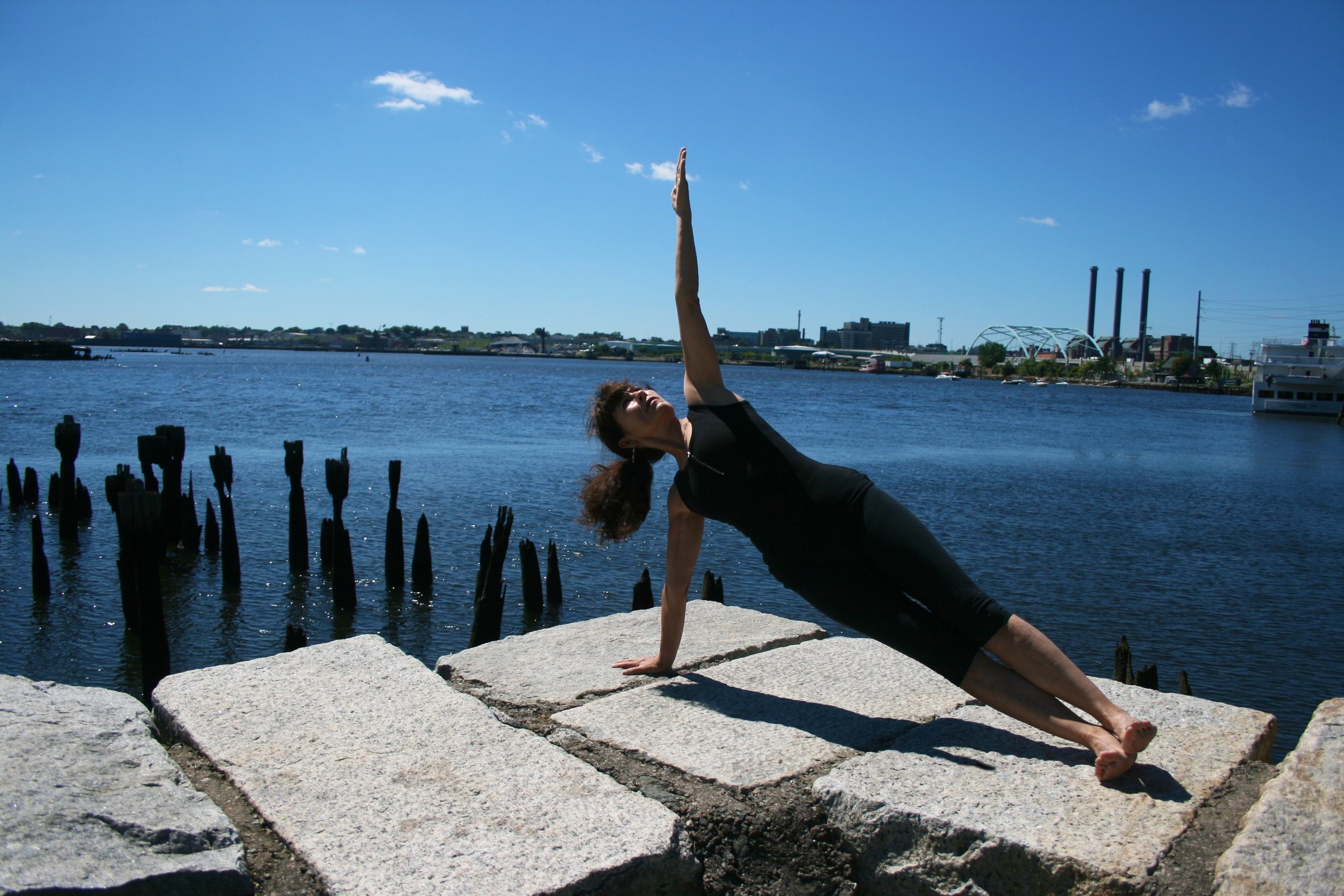This year we have been exploring Kriya Yoga, mentioned by Patanjali in the Yoga Sutras. The first sutra of the second pada states, Tapas (self discipline, burning drive toward purification, heat), svadhyaya ( reflection on one’s own self, study of wisdom revealing texts, mantra repetition), isvara pranidhanani ( surrender of ego, humility, radical openness, devotion) kriya yogaha (yoga of action).
The three great paths, as Iyengar calls them, are represented by these three components. The practice of tapas is the path of selfless action, karma-marga; svadyaya is the path of the mental self discipline, jnana-marga; and the path of loving devotion, isvara pranidhana is bhakti-marga. These paths purify the body, speech, and mind. For the yogi, these are well worn paths.
How do we bring Kriya yoga into asana work? We must revisit the concept of will power and the concept of consciousness to fill out the multidimensional palate that Kriya yoga inhabits.
When we practice asana the process of involution begins. We work with our outer most layer, the muscles, bones and skin to create the iconic shape of a pose. The physical effort and intelligence required involves a certain amount of self-discipline. Will power, attention with intention, is applied as well. The ego (asmita), a dimension of consciousness involved with the sense of self, creates a burning drive in the physical body that aims for the perfectly aligned pose. This particular dimension of will power is the “will to do”. The physical process of practicing an asana is a manifestation of tapas. It falls in to the category of karma-marga.
Can you maintain the pose in order to discover the inner layer, the organic body? The element of will power required to study in this way is the “will to maintain”. One must be curious and interested in what has transpired. The mind (manas), another dimension of consciousness, acts as a data processor. Left to its own devices, it will sabotage your pose. It jumps around like a flea attempting to survey anything that comes into its view.
With discerning observation one can narrow the focus of the mind and hone the attention to a particular point. This state of concentration can be applied to study alignment, the breathing pattern, the organic body’s response (systems), and the sensitivity of the intelligence. This form of self-study is a manifestation of svadhyaya and comes under the heading of jnana-marga.
As one’s practice matures and deepens the discriminating intelligence (buddhi), a third dimension of consciousness, directs the asana. We move beyond the will to do and the will to maintain and settle down into the “will to become”. We arrive at the point where we are done with the doing and move to a deep state of being. We inhabit our pose and exist in the seat of the seer. When Mr. Iyengar deepened his poses, he said he experienced isvara pranidhana. For him, alignment was the path to enlightenment. He existed in the “will to be”. In this state the ego is no longer striving and a sense of humility, sanctity, devotion, clarity, and purity come into being. We operate from a layer deeper than the physical body, the organic body, the mental body, and the intellectual body. It is possible to experience a profound sense of bliss when one practices in this manner. This is the domaine of bhakti-marga.

